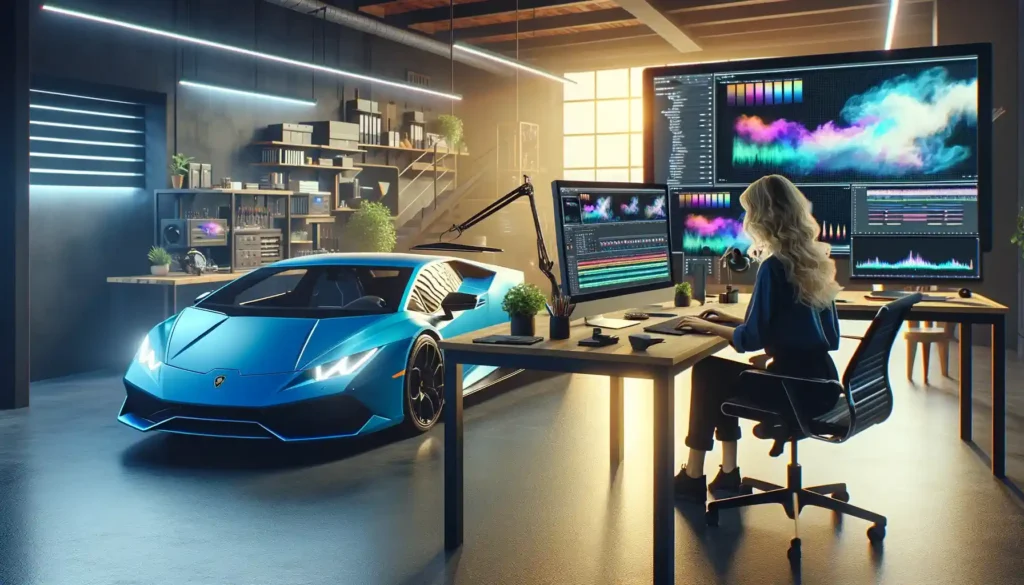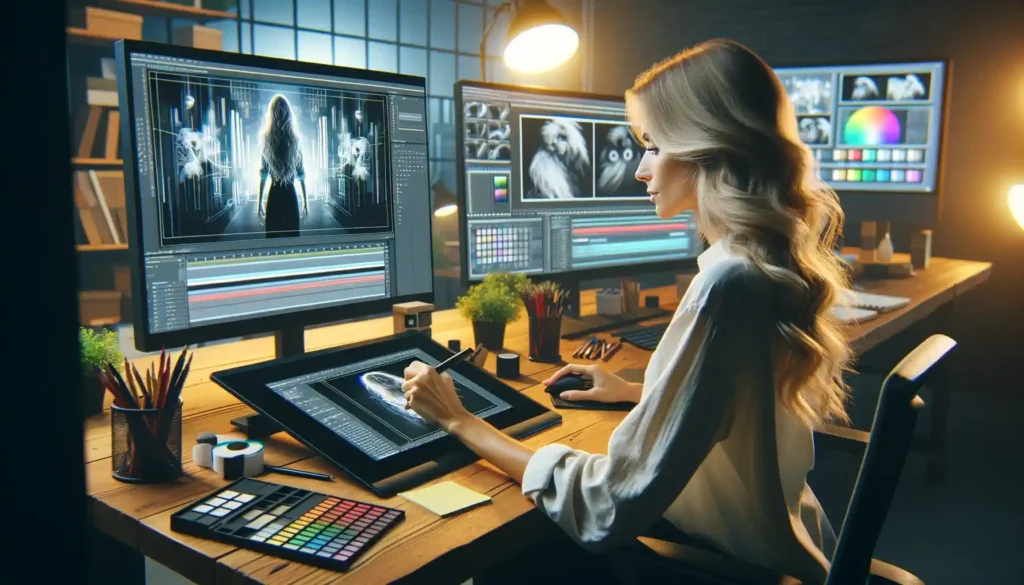How to Use UI Motion in Enhancing User Experience. User interface (UI) design, and motion play a pivotal role in enhancing user experience (UX). By integrating motion effectively, designers can create more intuitive, engaging, and functional applications.

This article explores the principles of UI motion design, its benefits, and practical tips for implementation.
Understanding UI Motion
UI motion involves the use of animation and dynamic effects within the user interface of digital products. It goes beyond mere visual appeal, serving functional purposes and improving user interaction.
Key Principles of Animating User Interface
- Purposeful Animation: Every motion should have a clear, functional purpose that enhances the user’s interaction with the product.
- Contextual Relevance: Animations should be relevant to the task and environment, aiding the user’s understanding of the interface.
- Tactile Feedback: Motion can mimic real-world interactions, providing feedback that guides and reassures users.
- Cognitive Load: Animations should not overwhelm the user; they must be designed to simplify interactions, not complicate them.
Benefits of UI Motion
- Improved Navigation: Motion can guide users through the navigation flow, subtly highlighting changes and the spatial relationships between elements.
- Enhanced Feedback: Animations can provide immediate feedback about actions, such as a button’s press or the success of a process, which reinforces user actions.
- Increased Engagement: Well-crafted animations can capture attention and improve the overall aesthetic of the application, which in turn increases user engagement.
- Error Prevention: Motion can prevent errors by guiding users and preventing actions at wrong times.
Best Practices in Implementing UI Motion

1. Start with a Plan
- Define Goals: Understand what you aim to achieve with animations (e.g., guide attention, illustrate relationships).
- Storyboard: Sketch out how animations will flow within the user journey to ensure they are cohesive and meaningful.
2. Keep It Simple
- Minimize Motion: Use motion sparingly. Overuse can distract and even annoy users.
- Smooth Transitions: Ensure animations are smooth and fluid, not jarring or choppy.
3. Ensure Accessibility
- Provide Control: Allow users to reduce or turn off animations, especially for those with motion sensitivities.
- Test for Usability: Involve users in testing to gather feedback on the effectiveness and comfort of your animations.
4. Use Tools and Frameworks
- Utilize tools like Adobe After Effects, Figma, or Sketch for designing animations.
- Implement animations using CSS, JavaScript libraries like GreenSock (GSAP), or frameworks such as React Spring for web applications.
Successful Case Studies of Using UI Motion in Enhancing User Experience

User Interface (UI) motion design has emerged as a crucial element in enhancing the user experience (UX) across digital products. By incorporating thoughtful animations and dynamic effects, companies can significantly improve usability, increase user engagement, and convey their brand identity more effectively. This article highlights several successful case studies where UI motion has been expertly applied to elevate the user experience.
Case Study 1: Google Material Design
Overview
Google’s Material Design is a design language that uses motion to articulate the user interface. It applies realistic motions that mimic the physical world, making digital interactions feel more intuitive and natural.
Success Points
- Responsive Interaction: Material Design animations provide clear feedback in response to user interactions, such as rippling effects on buttons when clicked, which confirms the action visually.
- Visual Cues: Transitions and animations guide users through tasks, helping clarify the hierarchy and functionality of the interface.
- Brand Identity: Consistent use of motion across Google’s apps reinforces the brand’s identity, creating a familiar and cohesive user experience.
Case Study 2: Slack
Overview
Slack incorporates motion design in subtle ways that enhance the functionality and aesthetic of its communication platform without overwhelming users.
Success Points
- Loading Animations: Slack uses playful, branded animations during loading times, reducing user frustration during wait times and reinforcing the brand’s friendly, informal tone.
- Notification Animations: Gentle animations for incoming messages and notifications draw attention without being disruptive, improving the overall user management of communications.
Case Study 3: Airbnb
Overview
Airbnb uses animation to enhance the usability of its app and website, facilitating a seamless experience from searching listings to booking stays.
Success Points
- Map Integration: When users interact with the map feature, properties gently bounce to indicate their location, making it easy to see where each listing is situated.
- Transitional Effects: Subtle animations during the transition from search results to the property details help maintain spatial orientation for users.
Case Study 4: Apple iOS
Overview
Apple’s iOS is known for its extensive use of motion to create a fluid and cohesive user experience across all devices.
Success Points
- Navigation Gestures: Smooth animations that accompany gestures make the interface intuitive, like the natural swiping motion to go back to a previous screen.
- Feedback and Interaction: Haptic feedback combined with visual motion cues provide a tangible sense of interaction, making digital elements feel more tangible.
Case Study 5: Nike
Overview
Nike’s mobile app uses motion to enhance storytelling and product visualization, creating a dynamic shopping experience that boosts engagement.
Success Points
- Product Showcases: Rotating animations allow users to view products in 360 degrees, enhancing user interaction and engagement with the product details.
- Storytelling: Motion is used to bring sports stories to life, engaging users with a cinematic approach to content presentation that matches the energy of the brand.
Motion Matters: Using Animation to Boost Usability and Engagement
These case studies demonstrate that when applied effectively, UI motion can significantly enhance the user experience, making interfaces not only more enjoyable but also easier to navigate and more responsive. Each of these examples shows how incorporating thoughtful motion design can meet user needs, improve interaction, and strengthen brand identity. As technology evolves, the strategic use of motion in UI design will continue to be a vital component in creating successful digital products.
Example 1: Loading Animations
A well-designed loading animation can make waiting times less frustrating for the user. For instance, Slack uses playful, branded loading animations that reflect its casual, friendly brand identity.
Example 2: Transitional Interfaces
Apps like Uber use motion to demonstrate the transition from booking to ride in progress. This helps in setting user expectations and provides a smooth transition between different states of the app.
Motion Matters: Using Animation to Boost Usability and Engagement
UI motion is a powerful tool in UX design, capable of transforming static interfaces into vibrant, dynamic experiences that communicate effectively and delight users. By adhering to the principles of effective motion design and incorporating user feedback, designers can create intuitive and appealing digital products.
Incorporating motion into UI design is not just about aesthetics—it’s about enhancing the functional usability of the application and making digital interactions feel more human and connected. As technology and user expectations evolve, the role of motion in UX will only grow, making it an essential skill for designers to master.



